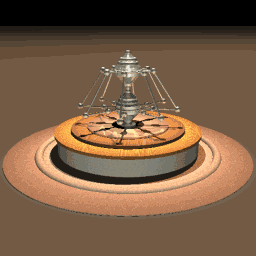Click here for visit google.
page layout algorithm
If we noticed a change in our organic search traffic or
rankings last week, and have a high ratio of ads to content at the top of our
web pages, chances are we could be affected by a refresh of the Google page
layout algorithm
Heard complaints from users that if
they click on a result and it’s difficult to find the actual content, they
aren’t happy with the experience. Rather than scrolling down the page past a
slew of ads, users want to see content right away.
So sites that don’t have much content
“above-the-fold” can be affected by this change. If you click on a website and
the part of the website you see first either doesn’t have a lot of visible
content above-the-fold or dedicates a large fraction of the site’s initial
screen real estate to ads, that’s not a very good user experience, Such sites may not rank as highly going forward
Penguin
Before Penguin, Google released a series of algorithm updates called Panda with
the first appearing in February 2011. Panda aimed at downranking websites that
provided poor user experience. The algorithm follows the logic by which
Google’s human quality raters
determine a website’s
quality.
In January 2012, so-called page layout algorithm update
was released, which targeted websites with little content.
The strategic goal that Panda, Penguin, and page layout update share is to
display higher quality websites at the top of Google’s search results. However,
sites that were downranked as the result of these updates have different sets
of characteristics. The main target of Google Penguin is spamdexing (including link
bombing).
Google Penguin is a code name for a Google algorithm update that was first
announced on April 24, 2012. The update is aimed at decreasing search engine
rankings of websites that violate Google’s Webmaster Guidelines by using now declared black-hat SEO techniques involved
in increasing artificially the ranking of a webpage by manipulating the number
of links pointing to the page.
Penguin affects approximately 3.1% of search queries in English,
about 3% of queries in languages like German, Chinese, and Arabic, and an even
bigger percentage of them in "highly spammed" languages. On May 25,
2012, Google unveiled another Penguin update, called Penguin 1.1. This update,
according to Matt Cutts, was supposed to affect less than one-tenth of a
percent of English searches. The guiding principle for the update was to
penalize websites using manipulative techniques to achieve high rankings. The
purpose per Google was to catch excessive spammers, but it seems some
legitimate sites and SEOs have been caught with this latest algorithm change.
Few websites lost search rankings on Google for specific keywords during the
Panda and Penguin rollouts. It appears anchor text
was to blame in these cases, as
the links pointing to these sites concentrated on only one or a few keywords
while the content of the websites was satisfactory. As the update focused on
the quality of backlinks, so the result varied for different websites. Google
specifically mentions that doorway pages, which are only built to attract
search engine traffic, are against their webmaster guidelines. Regardless, many
people still use this technique..(W)

Panda
It was written by Navneet Panda, which is why it was named
Panda, and Vladimir Ofitserov of Google. The patent application was filed on
September 28, 2012, well after Panda was released into the Google search
ranking algorithm. On March 25, 2014, it was granted by the U.S. Patent Office.
Google Panda was built through an algorithm update that used artificial
intelligence in a more sophisticated and scalable way than previously possible.
Human quality testers rated thousands of websites based on measures of quality,
including design, trustworthiness, speed and whether or not they would return
to the website. Google's new Panda machine-learning algorithm was then used to
look for similarities between websites people found to be high quality and low
quality.
Many new ranking factors have been introduced to the Google algorithm as a
result, while older ranking factors like PageRank have been downgraded in
importance. Google Panda is updated from time to time and the algorithm is run
by Google on a regular basis
Google says it only takes a few pages of poor quality or
duplicative content to hold down traffic on an otherwise solid site, and
recommends such pages be removed, blocked from being indexed by the search
engine,(W).










